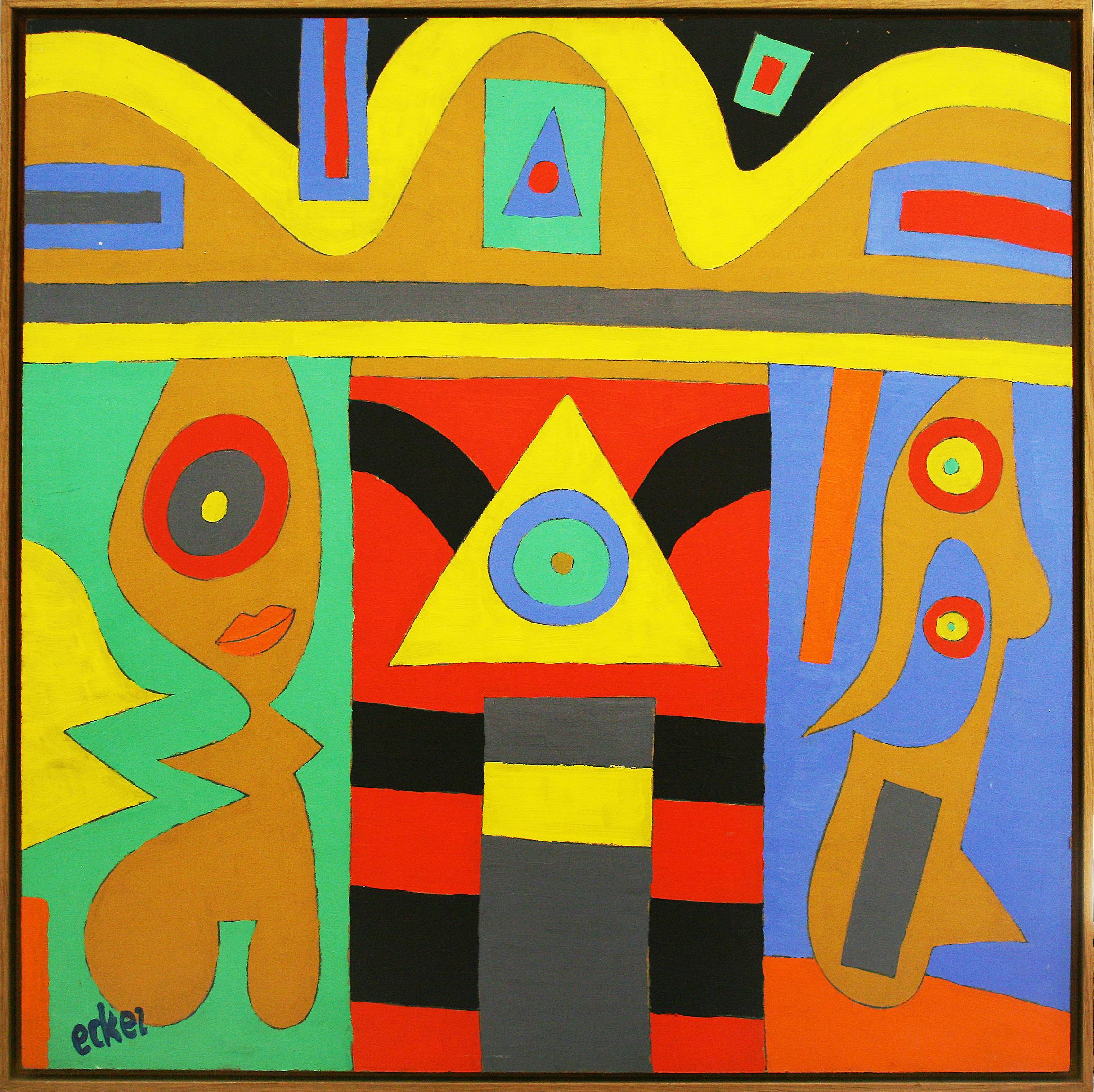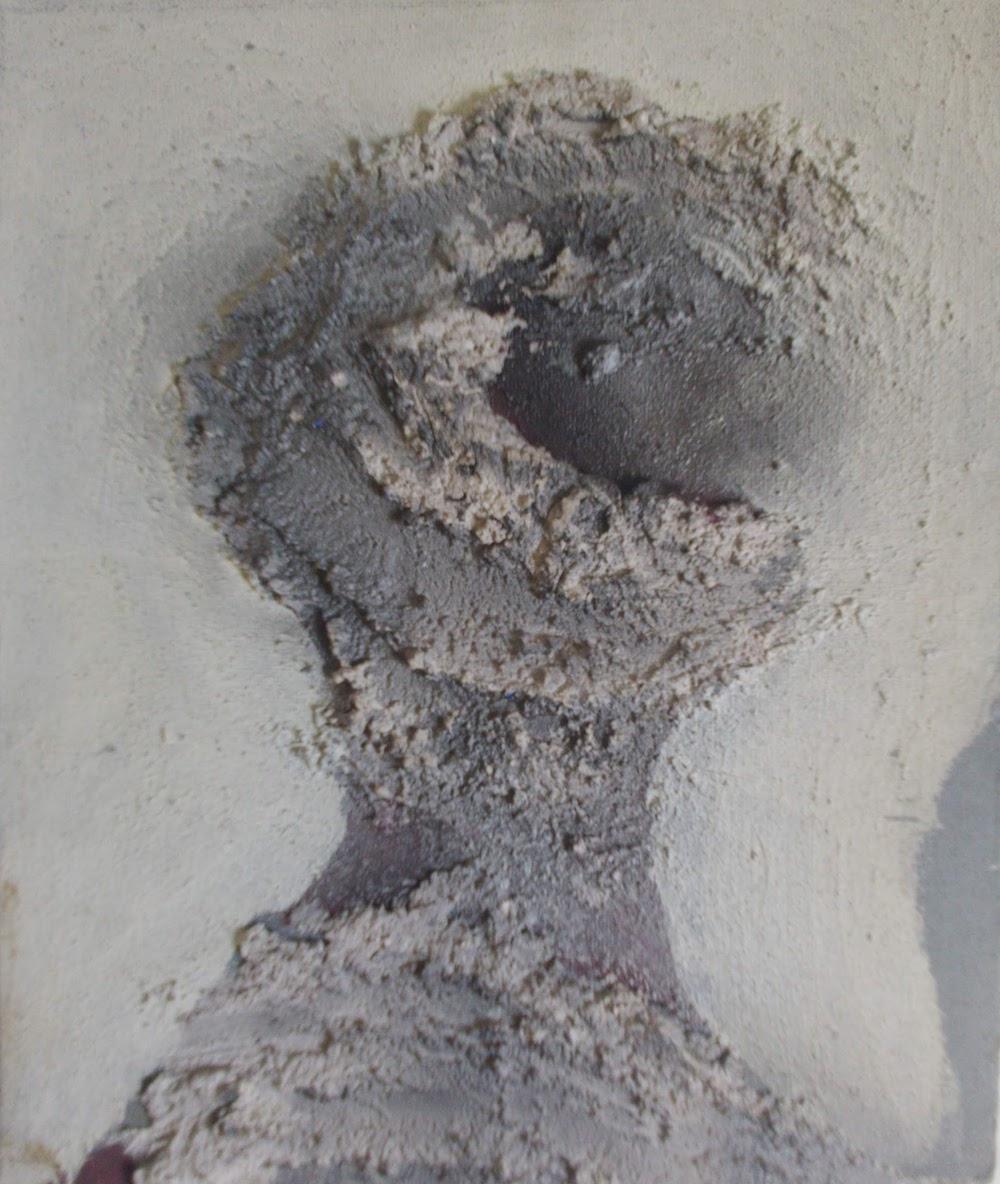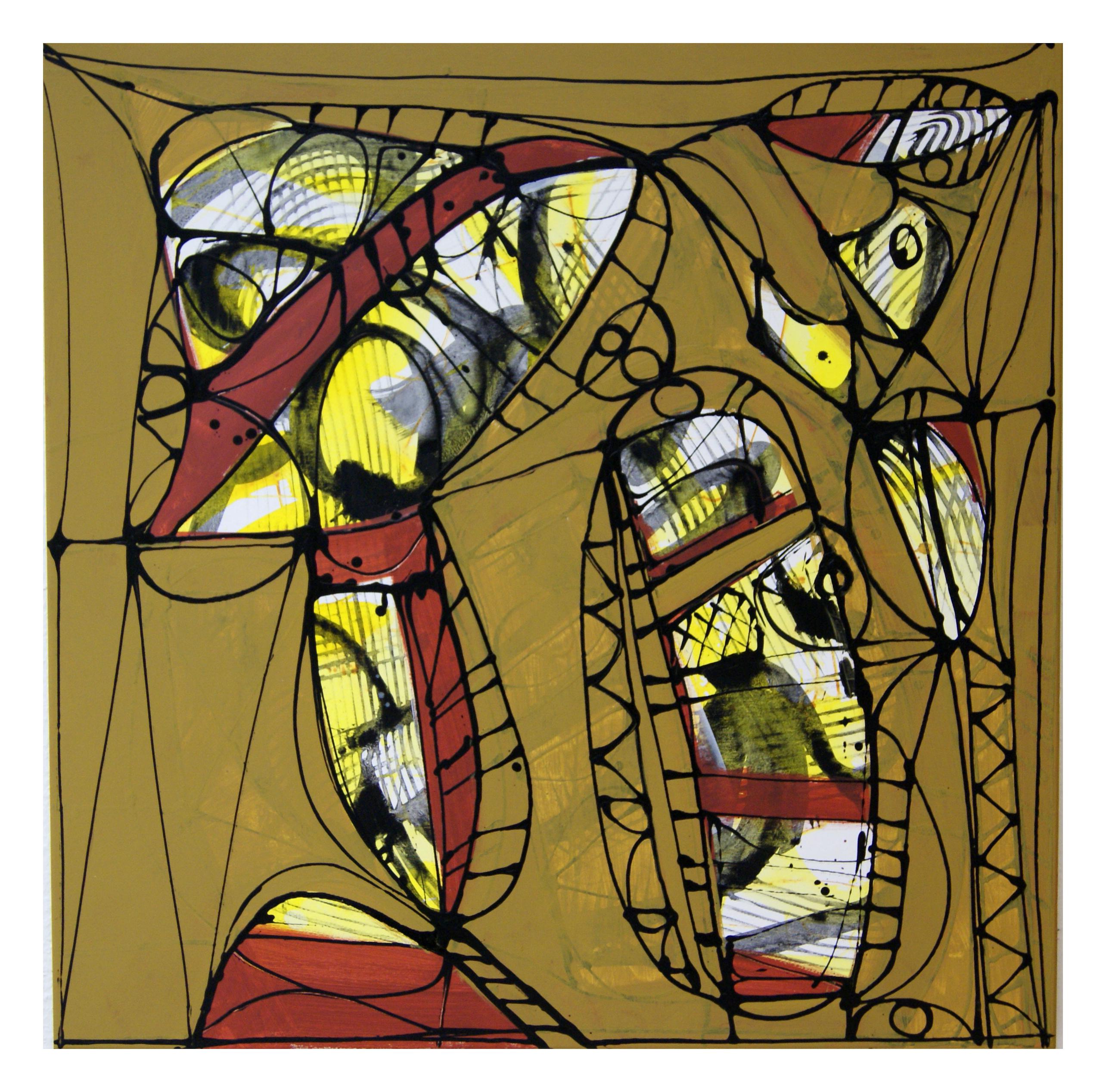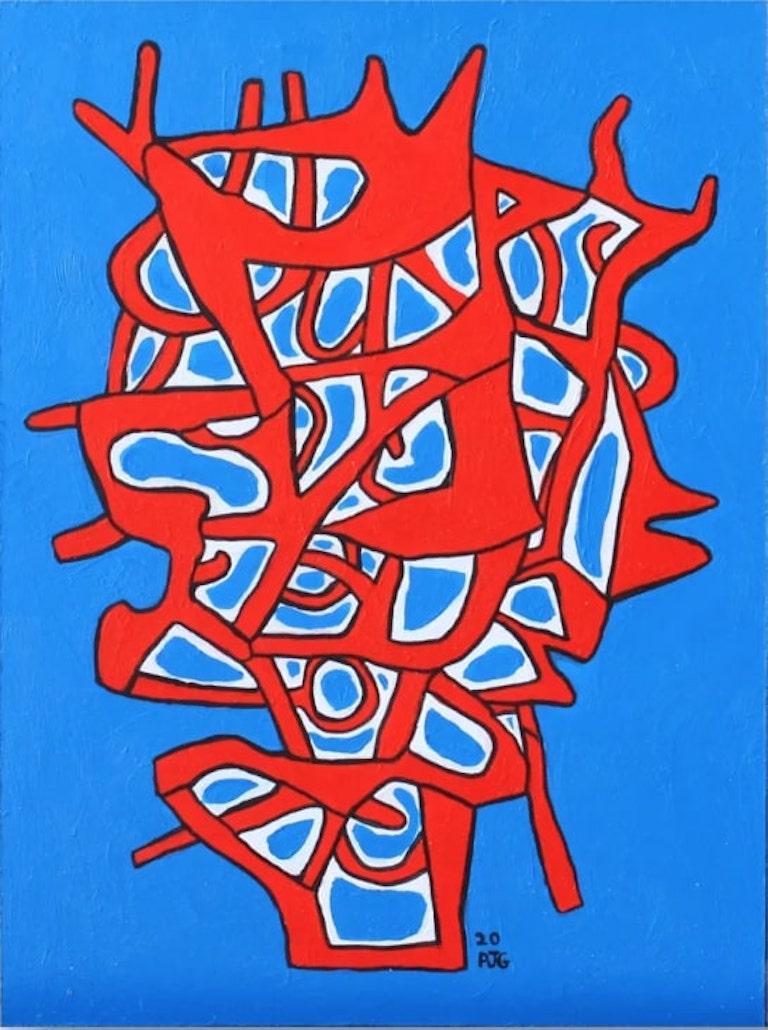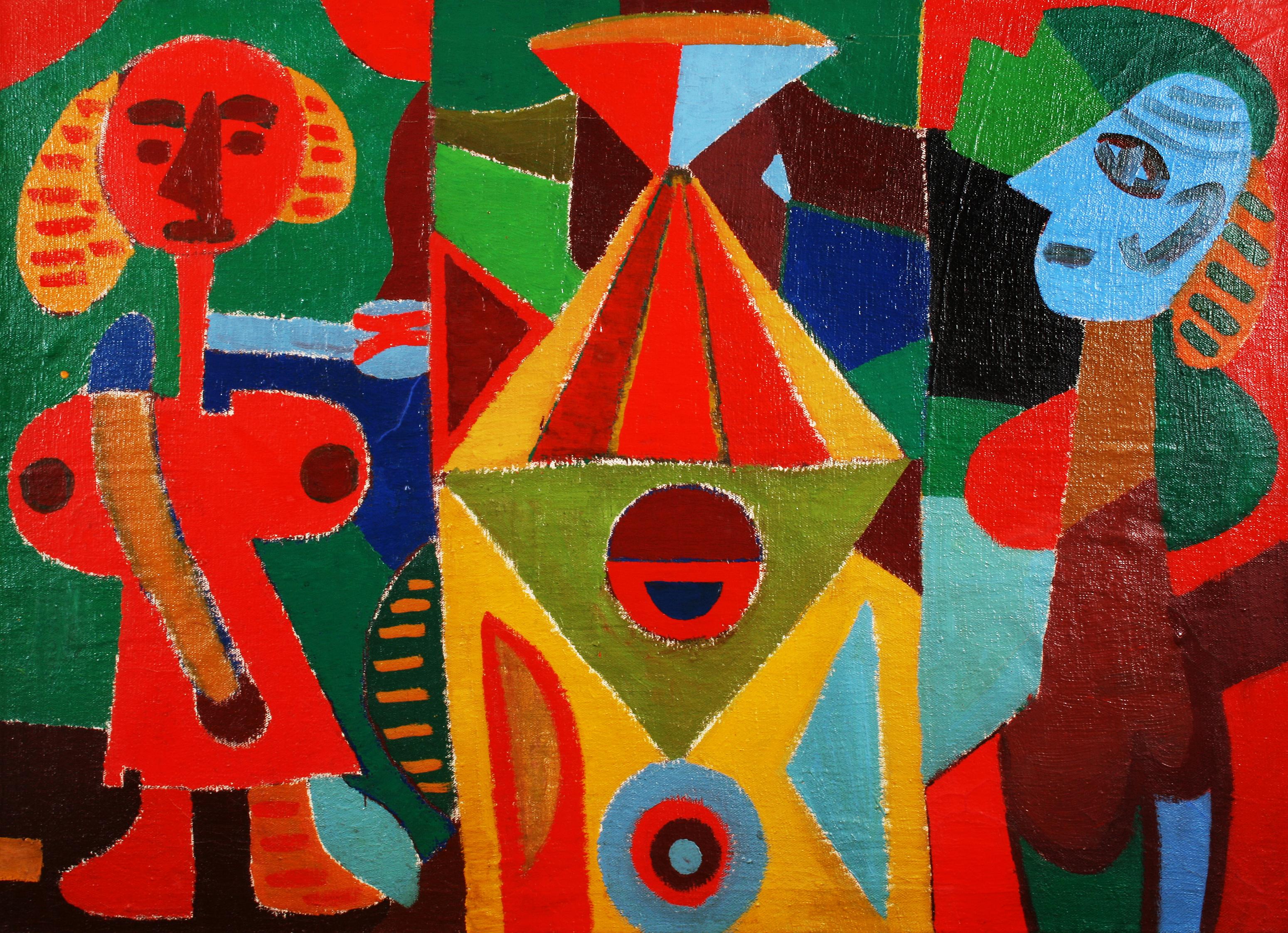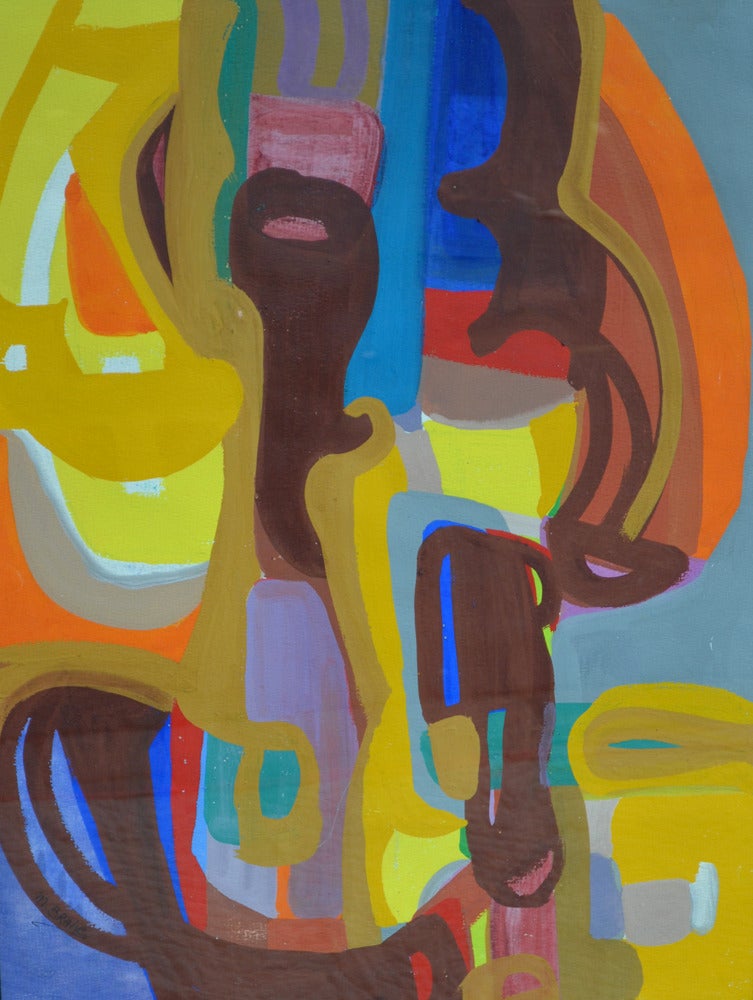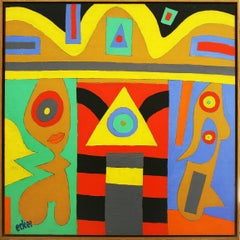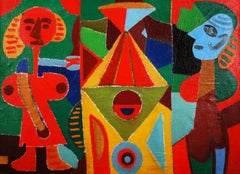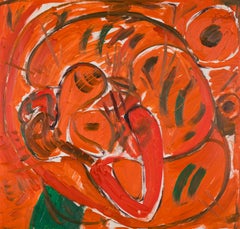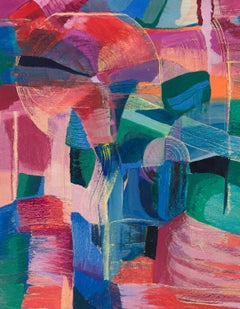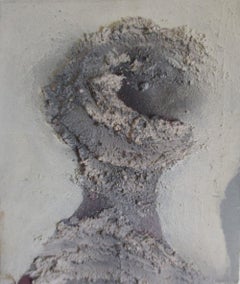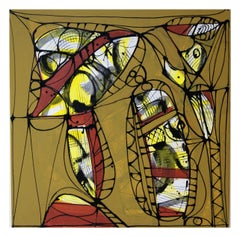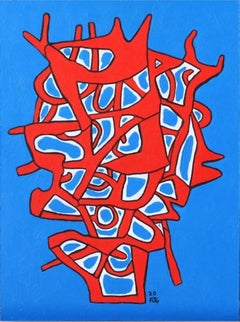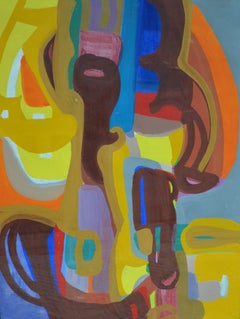Want more images or videos?
Request additional images or videos from the seller
1 of 5
Franz EckerWooden Heads
$4,773.42
£3,545.99
€3,982
CA$6,628.45
A$7,233.17
CHF 3,793.92
MX$87,849.32
NOK 47,388.17
SEK 44,784.19
DKK 30,314.55
About the Item
Since Franz Ecker’s early death in 1999 his work has been newly appreciated, what is manifested in numerous exhibitions, catalogues and in the acclaimed film about the artist. He was extremely productive and left behind an almost unmanageable scope of works in various styles. Among them some of the top works that are unparalleled in recent Austrian art history and whose significance has not yet been adequately appreciated.
After finishing his studies in 1966 in class of prof. Sergius Pauser and after receiving his two prizes, Franz Ecker moved back to Leonding where he developed his clear, abstract language of forms. Among his sources of inspiration are Cezanne and Picasso, as well as Martin Polasek who was one of his teachers. This led him to painting in a flat and abstract manner, which triggers a spatial experience through its exact color coordination and strict composition. The strongest period in his oeuvre is the time when his paintings are between figuration and abstraction. Only until around 1975 he additionally creates numerous watercolors, even though he restricts this medium to his more lyrical works.
If Franz Ecker cannot be included in the avant-garde cannon of the 70’s, it is only because he witheld from presenting his works on the art market. Instead of using the opportunities that were offered to him in Vienna, he returned after his time at the academy to Linz where there was no appreciation nor market for his works. Distanced from the established art business, Ecker lives uncompromisingly the precarious life of a lonely genius. An artist myth, which in his case certainly is a bitter reality. Unimpressed by this, Ecker develops an increasingly broad language of forms within the clear line of abstract pictorial conception, which he emphasizes with constantly new forms of signature.
At the end of the seventies his works became more gestural and expressive. His works like “Kafka” anticipate the “Neue Wilden”. When these are celebrated as the “return of painting” a few years later, Franz Ecker, with self-confidence in an interview, realizes that he does not see many revelations in them. He was still “a one-eyed man among the blind”.
Franz Ecker to that time developed his style further achieving highly structured flatness that is often compared to Keith Haring. For museums, curators, art historians and collectors, Ecker leaves behind a work that still allows for the possibility of interpretation, revaluation, even discovery.
- Creator:Franz Ecker (1943 - 1999)
- Dimensions:Height: 33.86 in (86 cm)Width: 33.86 in (86 cm)
- Medium:
- Movement & Style:
- Period:
- Condition:
- Gallery Location:Wien, AT
- Reference Number:1stDibs: LU1782210072412
About the Seller
5.0
Vetted Professional Seller
Every seller passes strict standards for authenticity and reliability
Established in 1973
1stDibs seller since 2022
13 sales on 1stDibs
Typical response time: 8 hours
- ShippingRetrieving quote...Shipping from: Wien, Austria
- Return Policy
Authenticity Guarantee
In the unlikely event there’s an issue with an item’s authenticity, contact us within 1 year for a full refund. DetailsMoney-Back Guarantee
If your item is not as described, is damaged in transit, or does not arrive, contact us within 7 days for a full refund. Details24-Hour Cancellation
You have a 24-hour grace period in which to reconsider your purchase, with no questions asked.Vetted Professional Sellers
Our world-class sellers must adhere to strict standards for service and quality, maintaining the integrity of our listings.Price-Match Guarantee
If you find that a seller listed the same item for a lower price elsewhere, we’ll match it.Trusted Global Delivery
Our best-in-class carrier network provides specialized shipping options worldwide, including custom delivery.More From This Seller
View AllKomposition 3
Located in Wien, 9
Seit seinem frühen Tod 1999 erlebt das Werk von Franz Ecker eine längst fällige Neubewertung, die sich auch in zahlreichen Einzelausstellungen, Katalogen und einem sehenswerten Kinof...
Category
Late 20th Century Abstract Abstract Paintings
Materials
Oil, Wood Panel
$5,094
Mann und Frau
Located in Wien, 9
Seit seinem frühen Tod 1999 erlebt das Werk von Franz Ecker eine längst fällige Neubewertung, die sich auch in zahlreichen Einzelausstellungen, Katalogen und einem sehenswerten Kinof...
Category
Late 20th Century Abstract Abstract Paintings
Materials
Oil, Wood Panel
$7,426
Ohne Titel
Located in Wien, 9
Seit seinem frühen Tod 1999 erlebt das Werk von Franz Ecker eine längst fällige Neubewertung, die sich auch in zahlreichen Einzelausstellungen, Katalogen und einem sehenswerten Kinof...
Category
Late 20th Century Abstract Abstract Paintings
Materials
Oil, Wood Panel
$4,033
Composition IXV
By Gudrun Mertes-Frady
Located in Wien, 9
The artwork is signed, dated and titled verso.
The artist says herself about her art "My focus has always been on abstract art. I'm attracted to its reduction of the "real", its es...
Category
1990s Contemporary Abstract Paintings
Materials
Canvas, Oil
Untitled
Located in Wien, 9
Michael Vonbank is an Austrian artist known for his experimental and colorful art.
This special work shows a surreal and expressive pictorial world. Invented creatures, fantasy and ...
Category
1990s Abstract Abstract Paintings
Materials
Acrylic
Untitled
Located in Wien, 9
Michael Vonbank is an Austrian artist known for his experimental and colorful art.
This special work shows a surreal and expressive pictorial world. Invented creatures, fantasy and ...
Category
1990s Abstract Figurative Paintings
Materials
Canvas, Acrylic
You May Also Like
Modernist abstracted Head
By Erik Scholz
Located in Norwich, GB
Erik Scholz was a Hungarian artist who trained at the Academy of Fine Arts in Budapest. He was awarded the prestigious Munkácsy Award in 1950, and received stipends to work and study...
Category
Late 20th Century Abstract Expressionist Abstract Paintings
Materials
Mixed Media, Oil
Abstract Painting Head and Figure by Wunderlich
Located in Winterswijk, NL
From a fabric of lines, surfaces, shapes and structures, balanced by matte and bright colors, the artist creates landscapes, fauna and flora, motifs of animate and inanimate nature. ...
Category
2010s Abstract Abstract Paintings
Materials
Canvas, Acrylic
Modernist Painting, "Visage"
By Peter Geise
Located in San Diego, CA
This is a one of a kind acrylic and mixed media painting on wood panel by San Diego artist, Peter Geise. It is unframed. Its dimensions are 9"x12" A certificate of authenticity will ...
Category
2010s Modern Abstract Paintings
Materials
Acrylic, Wood Panel
Masks
By Miette Braive
Located in West Hollywood, CA
Belgian artist Miette Braive(1916-2000), was classically trained in Belgium, before moving to Paris to pursue her art career as first a student and then a contemporary of the famed F...
Category
1940s Abstract Paintings
Modernist abstracted Head
By Erik Scholz
Located in Norwich, GB
Erik Scholz was a Hungarian artist who trained at the Academy of Fine Arts in Budapest. He was awarded the prestigious Munkácsy Award in 1950, and received stipends to work and study...
Category
Late 20th Century Abstract Expressionist Abstract Paintings
Materials
Mixed Media, Oil
Head VIII
By Erik Scholz
Located in Norwich, GB
Erik Scholz was a Hungarian artist who trained at the Academy of Fine Arts in Budapest. He was awarded the prestigious Munkácsy Award in 1950, and received stipends to work and study...
Category
Late 20th Century Abstract Expressionist Abstract Paintings
Materials
Mixed Media, Oil
More Ways To Browse
Wooden Head
Portland Art Museum
Figure Abstract Art
Madrid Spain
Exhibition Catalogues
Love Acrylic Art
Milwaukee Art
Abstract Geometric Painting Mid Century
Havana Cuba
Ontario Canada
American Modernist Paintings
Nature Abstract Paintings
Pastels On Canvas
Buffalo Art
Cubist Oil Paintings
Bright Abstract Painting
Abstract Painting 1959
Bright Abstract Art
